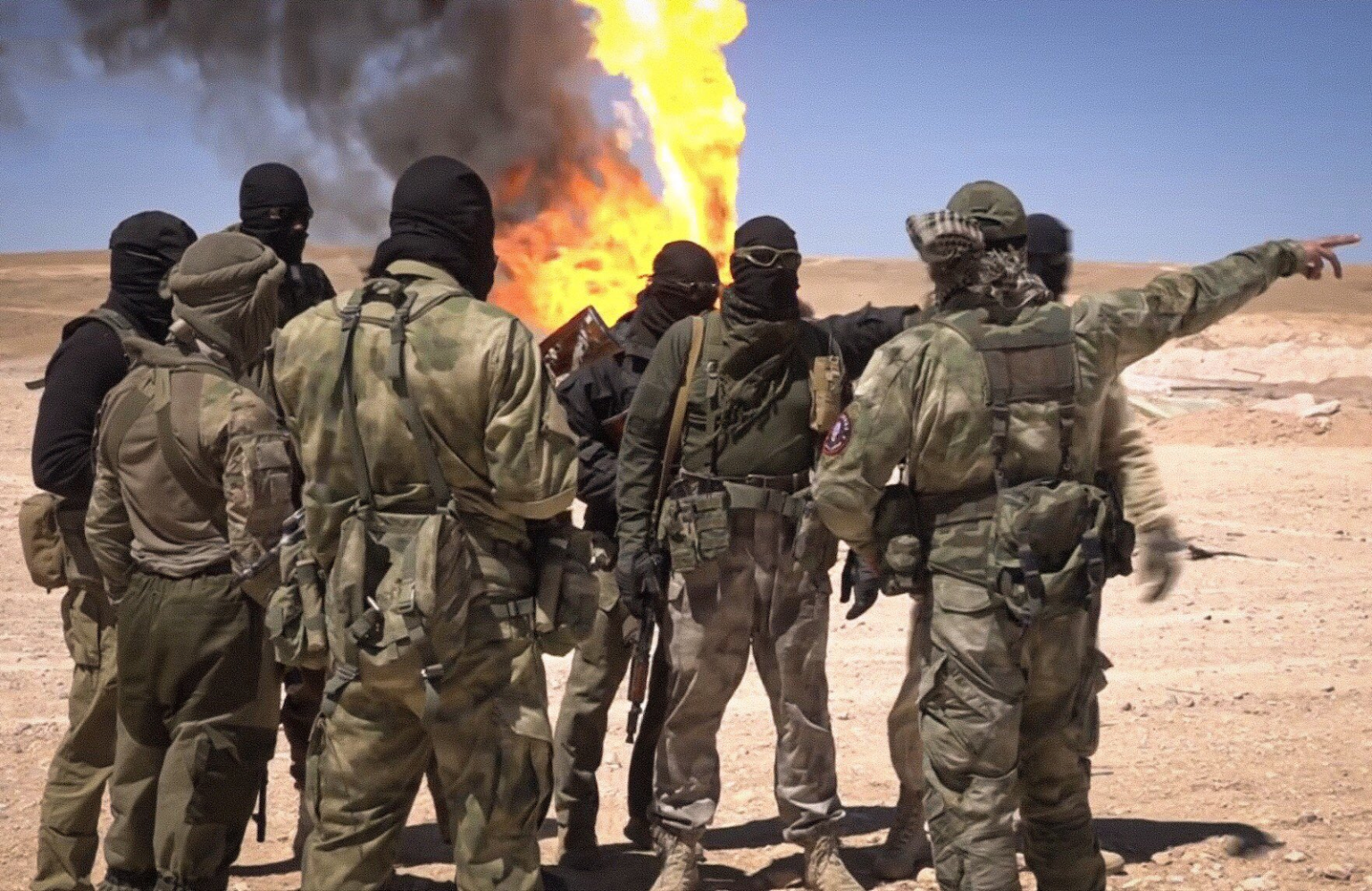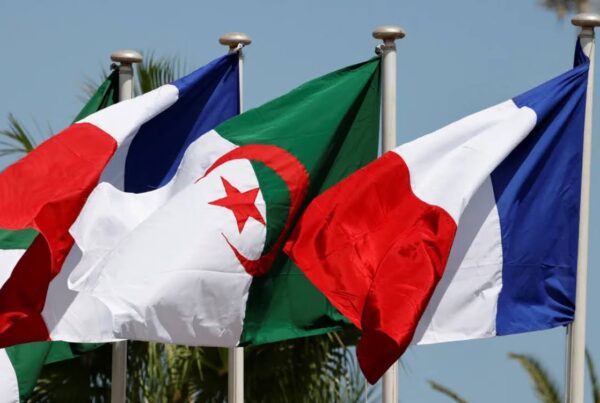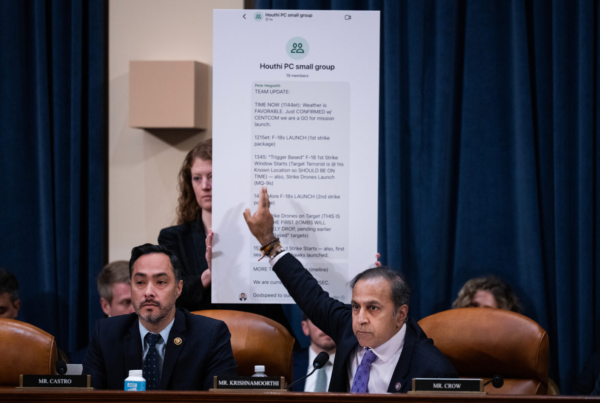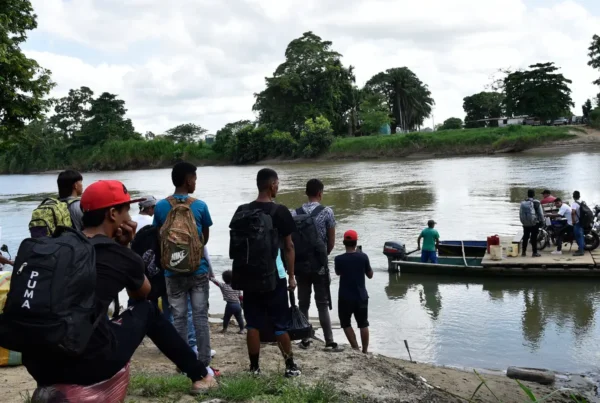This article is part of the collaboration with International Policy Review at IE University. You can read other articles in the series at the link just above.
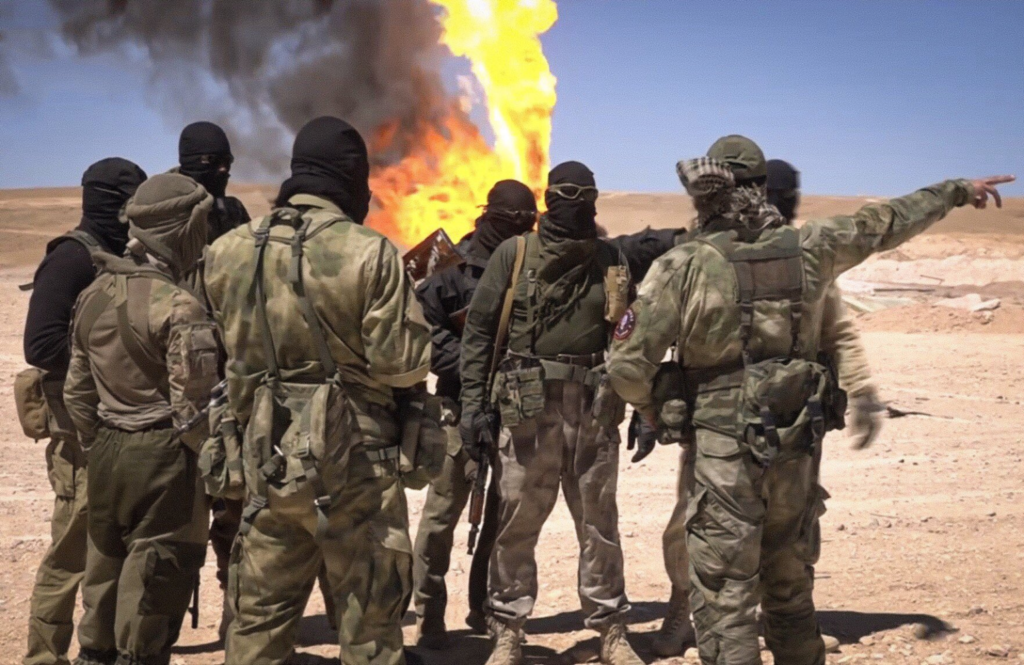
Credit: X via Asia Times
By Alessandro Cucchi. Edited by Matilde Romagnoli.
Why was a Russian private military company wrapped in secrecy fighting on behalf of the Assad regime in Syria? Wagner’s covert operations enabled the Russian Government to bypass international law and manoeuvre in legally ambiguous spaces. To understand this, we must look beyond what occurs on the battlefield and acknowledge the motivations behind the Wagner Group’s involvement—from extracting natural resources to political alliances and a wider geopolitical chess game. However, it is key to note that recent events, including the Wagner mutiny of 2023, the death of Yevgeny Prigozhin, and the fall of the Assad regime in December 2024, have reshaped Wagner itself, and its operations in Syria and beyond.
Russia is competing with the United States and its allies for different spheres of influence around the world. One of these is the Middle East. However, Russia has not always utilized the same tactics and strategies as its counterparts; instead, it has opted to pursue an asymmetric race (the use of unconventional weapons and tactics) to counter American regional dominance. One of the strategies employed is the use of private, but in fact, state-linked actors, such as the Wagner group, a Private Military Company (PMC), speculated to have been founded in 2013 by Dmitry Utkin, a former lieutenant colonel of the Russian military intelligence agency.
Nonetheless, in September of 2022, a video went viral of a man named Yevgeny Prigozhin, speaking to inmates in Russian prisons, offering them the chance to fight in Ukraine. The significance of this video was that Prigozhin stated that Wagner was his group, while previously, both the Kremlin and Prigozhin always denied any speculation regarding the group’s existence and his involvement within it.
Since 2012, Russia has accelerated the growth of private security and military companies, with Putin stating that he saw these groups as a “tool for realizing national interests” without state participation. The group gained notoriety in 2014 after helping Russia’s annexation of Crimea. Since then, Wagner has permeated four different continents, spreading its influence like an unstoppable virus, and delivering the Kremlin a significant instrument for securing foreign influence. It is reported that the group has been active in several countries, including Venezuela, Ukraine, Libya, Mali, Sudan, the Central African Republic (CAR), Madagascar, Mozambique, Yemen, and Syria.
Wagner forces first appeared in Syria around 2015, replacing another Russian PMC by the name of Slavonic Corps, which had been set up by a Russian entity called the Moran Security Group, active since 2013. Following a session of the State Duma (the lower house of Russia’s Federal Assembly) in September 2015, Putin announced that it would intervene in the Syrian Civil War. However, the Russian government was to some extent constrained in the depth of the activities they were able to conduct. Officially, on paper, Russian intervention was limited to air power, with no ground operations. This, nonetheless, proved challenging as air power alone was not enough to shift the balance of the conflict, especially because the Syrian regime forces were depleted and about to collapse. Therefore, Putin turned to PMCs such as the Slavonic Corps and then Wagner to provide on-the-ground fighters to secure key targets of major importance to the Kremlin, such as energy resources and support for the Assad regime.
The advantage of using private security forces, besides avoiding official Russian military casualties and public outcry against foreign deployments, was that it provided plausible deniability for the Kremlin, as technically they were not official Russian military soldiers. This was evident on the battlefield, where these mercenaries bore no insignias tying them to a specific country or government. Furthermore, their problematic behaviour, including human rights violations and abuse of civilians permitted the Russian government to disavow any command and control over them. Meanwhile, they also provide Russia with a proxy tool for military confrontations with the US, minimizing the risks of direct conflict escalation.
So, what exactly was the Wagner Group doing in Syria? The group was active in combat operations, supporting pro-government forces, training Syrian military groups, and securing strategic resource-rich territories. The “first task” of Wagner was to save the regime of Bashar al-Assad, by fighting forces that threatened its collapse—though in the end, they did not succeed. This meant Wagner and the Russian military fought against Kurdish forces, various rebels, and ISIS. Additionally, the group was mainly deployed in resource-rich areas in Syria, to control and to recapture energy resources for the Assad regime. These areas included Syria’s largest natural gas and oil fields Shaer, al-Mahr, Jazal, and Hayan. It was reported that the shell company Evro Polis was the same company that Wagner used to employ its fighters in Syria and the one the Syrian government hired to protect its oil fields. Allegedly, Wagner has received up to a quarter of the production profits, from these oil and natural gas fields. It is speculated that the Assad regime granted Wagner such a generous cut because the group managed to recapture these zones from the Islamic State, and as they also continued to guard them against hostile raids.
A major instance that sparked international awareness of Wagner’s operations in Syria was during the battle of Khasham in February 2018. During this confrontation, US forces engaged against Syrian government troops, alongside Wagner mercenaries, who were attempting to seize control of the Conoco natural gas plant in Deir al-Zor. The US contacted their Russian counterparts, who confirmed that there were no Russian military forces present in the described area. In response, the US took their response to a different level, by conducting air and artillery strikes, effectively wiping out the attack. It is estimated that between 200 to 300 hostiles were killed, including a significant number of Wagner mercenaries. At the time, the battle of Khasham also raised eyebrows regarding the military capabilities of the Wagner group, as the PMC had heavy weapons at their disposal, including tanks, other armoured vehicles, and rocket launchers.
The current situation surrounding Wagner has drastically changed since the full-scale war in Ukraine broke out in February 2022. After the death of Yevgeny Prigozhin in a plane crash in August 2023, following the attempted mutiny on Moscow, the group faced a leadership crisis and reorganization under the Kremlin’s close supervision. It appears that Wagner is now directly managed by the state, as it has been integrated into the control of Russia’s Ministry of Defence. This recalibration has limited Wagner’s operational independence but maintained its role as a strategic tool for Russian foreign policy. As mentioned, following Russia’s full-scale war in Ukraine, the group’s operations have also shifted in Syria, with reports suggesting a diminished presence as resources and personnel have been redirected to the frontlines of Ukraine.
With recent developments, the fall of the Assad regime in Syria has further complicated Wagner’s operations within the country. The collapse of the regime has destabilized the agreements and guarantees Wagner relied on for resource exploitation and financial returns. It is speculated that this has forced the group to recalibrate its operations, with some units withdrawing and others reassigning their focus. Furthermore, the ongoing war in Ukraine has further strained Wagner’s capacity, with many mercenaries redeployed to the Ukrainian frontline, significantly diminishing its footprint in Syria.
Besides Wagner’s combat and resource-security roles, the PMC has been accused of severe human rights violations during its deployment in Syria. One of the most notable cases was in 2017, when Wagner mercenaries filmed themselves torturing, and then executing Muhammad Ismail, a deserter of the Syrian army, to make an example of him (a common practice within Wagner). This incident led to international condemnation and legal action from three NGOs addressed to the group and the Kremlin. Such actions have raised serious concerns regarding the group’s adherence to international law, and also the ethical repercussions of employing PMCs in conflict zones. The controversial nature of the Wagner group, and its involvement in Syria, has emphasized the challenges in regulating and holding non-state military actors to account.
The Wagner Group’s military engagements in Syria exemplify the strategic utility in advancing Russian geopolitical interests, where they are often seen operating in resource-rich areas and high-risk environments.
Securing Syria’s oil fields became one of Wagner’s most important income measures for its operations in Syria, supplementing the substantial funding received by the Kremlin. It is believed that the Russian government allocated approximately 86 billion rubles (approximately $940 million) to the Wagner group from May 2022 to May 2023.
Similar to its operations in Syria, the Wagner is tasked with resource exploitation and appropriation in several countries, particularly in Africa and the Middle East, through lucrative contracts. The business model of Wagner differs from the countries they operate in, however, one of their most common practices is to provide security services in exchange for access to valuable resources, such as gold, oil, gas, and diamonds, which are then sold and exported to further fund their operations. This model effectively turns conflict zones into lucrative opportunities, allowing the group to have multiple large income streams, while also giving Russia significant influence over resource-rich but politically unstable countries.
A notable instance is the operations in the Central African Republic, where the group has been deployed since 2018, providing military assistance to the government, offering security services, training local forces, and protecting key officials, strengthening the government’s position during ongoing internal conflicts. In return, the group has received access to several gold mining sites, including the country’s largest gold mine, Ndassima. Through the use of various shell companies (similar to Evro Polis in Syria), such as Midas Resources, the PMC oversees all operations, and allows them to generate significant profits. These tasks are not limited to the CAR, and Wagner has expanded to several resource-rich African states. It has been estimated that from mining activities alone, Wagner has earned approximately $2.5 billion for the Kremlin from African gold since the invasion of Ukraine, where they have also played a key role in the conflict. The significance of the operations in the CAR showcases how Russia leverages PMCs to secure strategic resources, enabling economic gain while bypassing state accountability. This allows Moscow to further consolidate influence in the African continent, creating dependency on Russia and deepening the region’s reliance on authoritarian partnerships.
Another noteworthy financier of Wagner is the United Arab Emirates (UAE). It is reported that the Gulf state has provided financial support to the PMC, during its operations in Libya and Sudan. The UAE has supported Wagner on these occasions to align themselves with mutual interests in the region. In brief, the Emirati government has facilitated the transfer of funds and resources to Wagner operations in Libya, supporting specific factions within the Libyan civil war. Meanwhile, in Sudan, it is believed that the UAE has used Wagner mercenaries to smuggle weapons into Sudan’s civil war, for Sudan’s Rapid Support Forces (RSF), who are currently fighting against the Sudanese army, thereby aggravating an already volatile conflict. By funding the Wagner, the UAE strengthens its foothold in North Africa and the Sahel, demonstrating how states increasingly turn to asymmetric strategies, like the employment of non-state actors, to project power while avoiding direct accountability. The support by a third party highlights the role played by the Wagner group, as a proxy force in various geopolitical scenarios, facilitating the expansion of spheres of influence of other countries.
Overall, the efficiency of PMCs like the Wagner group exemplified Russian foreign policy’s drive to assert its influence in global conflicts and key regions. At one point, the Wagner became a key tool in Russia’s foreign policy toolkit, combining economic exploitation with military intervention in areas of strategic value. Nonetheless, a series of events, such as the Russian full-scale invasion of Ukraine, the Wagner Mutiny of 2023, and the fall of the Assad regime on December 8, 2024, changed and reshaped the way Wagner is today. Russia’s international stance has been damaged and destabilized by the war in Ukraine, redirecting Wagner’s focus away from foreign operations to the frontlines of the Russo-Ukrainian conflict.
These developments led to the group’s dismantling and integration into various branches of the Russian government. The recent fall of the Assad regime has further disrupted Russia and the Wagner to scramble to protect its strategic interests within the country. While the situation remains very fluid, it is believed that the group is being forced to scale back, leaving Russia with a diminished footprint in the region. Combined with the war in Ukraine, these factors have constrained Russia’s global ambitions, highlighting the growing challenges of maintaining influence abroad amid increasing isolation and the high costs of a prolonged conflict.
Other posts that may interest you:
Discover more from The Sundial Press
Subscribe to get the latest posts sent to your email.


